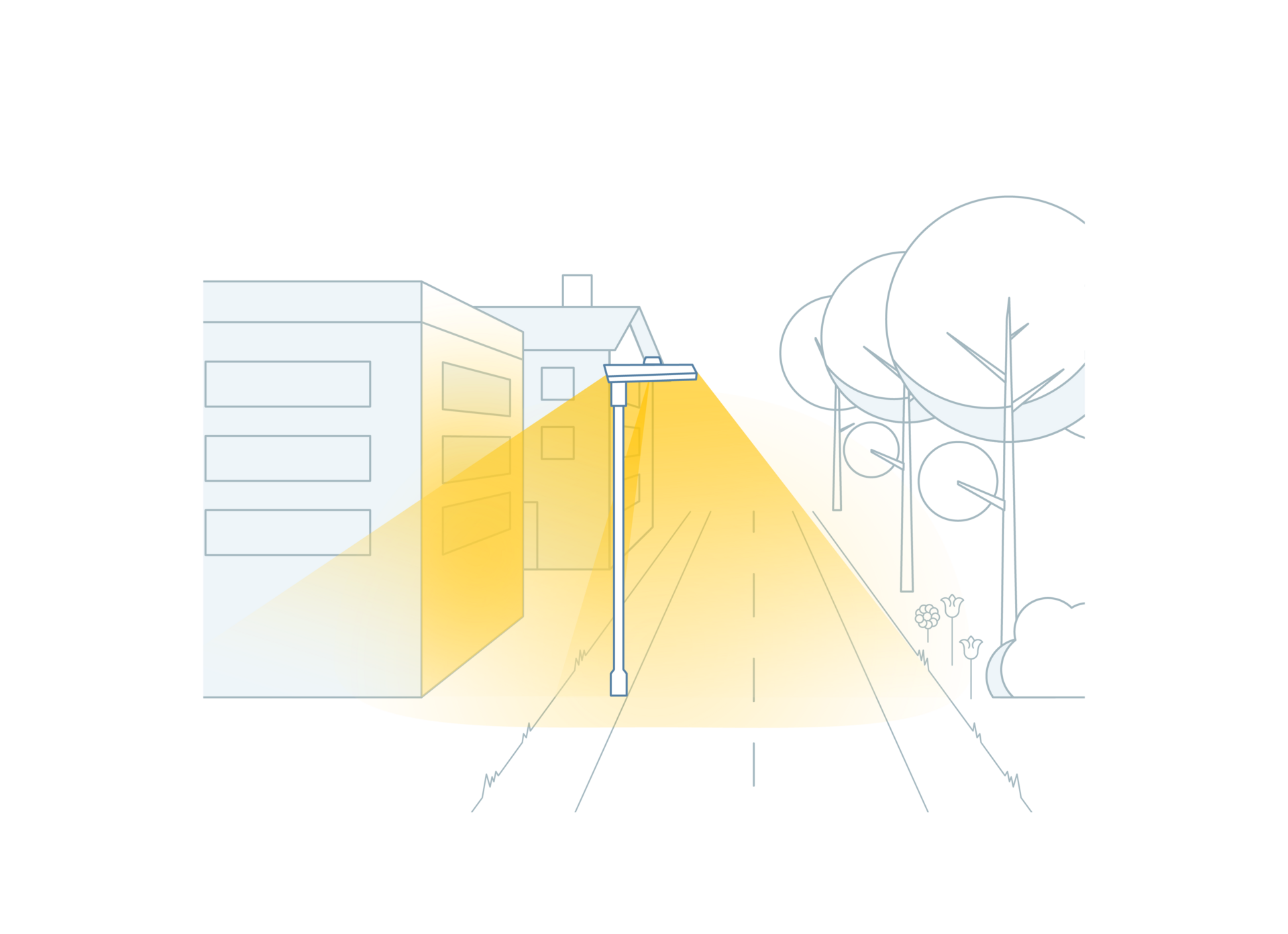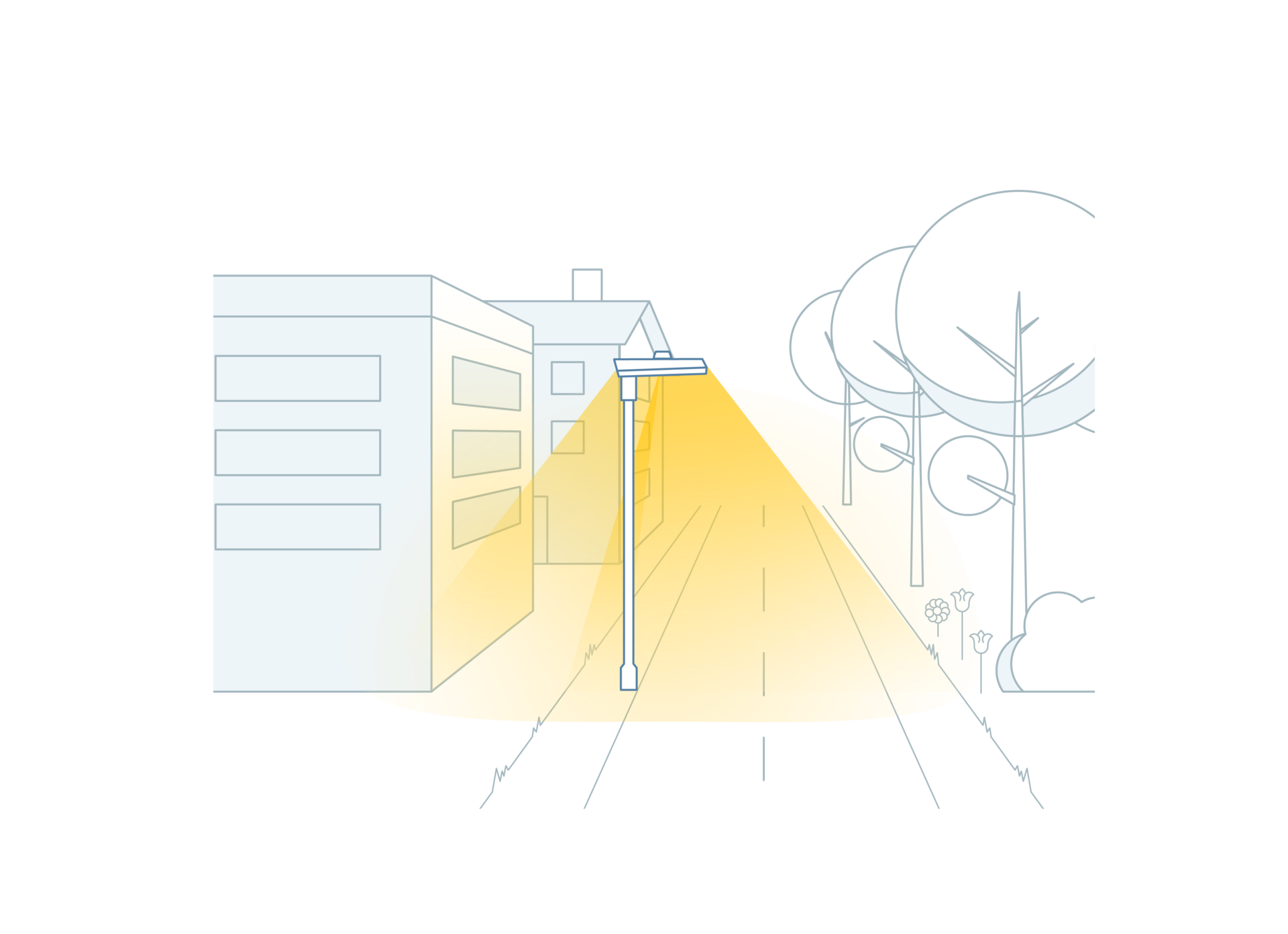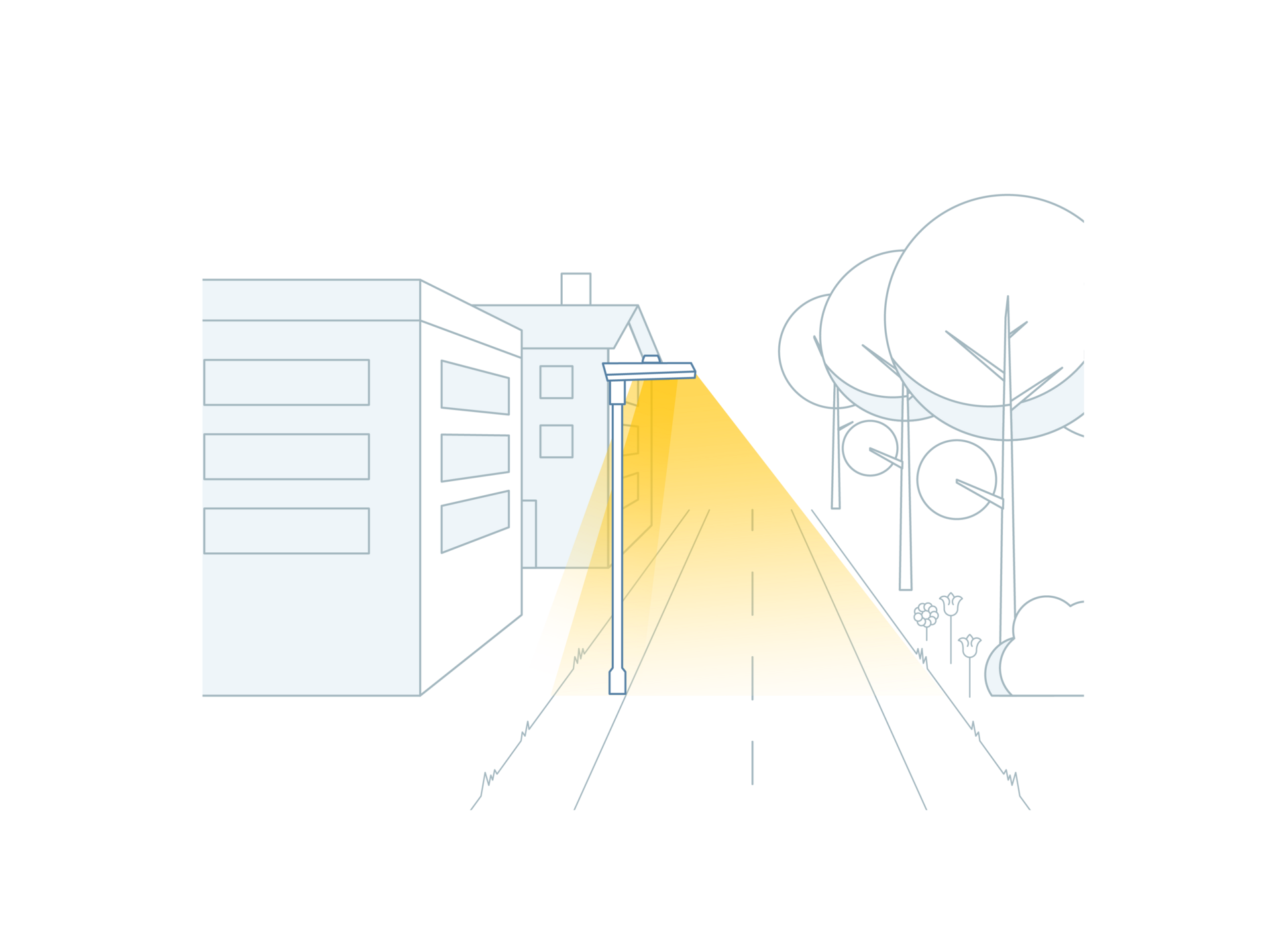Awareness of sustainability issues is becoming increasingly important in the field of outdoor lighting. Sustainability in this context means "as much light as necessary, as little as possible". To achieve this, the right balance between safety, environmental protection, well-being and energy efficiency must be found as early as the planning stage.
Through the targeted use of new technical possibilities and tools, sustainable and environmentally friendly lighting infrastructures can thus be realized - right up to the reduction of CO₂ emissions from luminaires.
It is important to consider street lighting holistically. At the beginning, there is always the question of whether, where and to what extent lighting is necessary.

Would you like to realize sustainable lighting? We are happy to help:
Plan an environmentally friendly street lighting in 8 steps
In addition to the fundamental question of the need for light, today we are increasingly concerned with other ways to illuminate not only efficiently, but also in an environmentally friendly manner.

Necessity - what is the need for light?
When we ask the question of necessity, we ask ourselves whether light is needed and for what. Is it a sidewalk, a street, a square, or an area?
What are the visual tasks of the people there, and how can light support them to increase their safety, well-being, or productivity?
Illumination period
In what period of time does it need light?With a suitable lighting control system, not only can the environment be protected, but at the same time energy consumption can be further reduced. Today, time-dependent lighting controls with dimming profiles are used as a basis. Depending on the area of application, such as busy main roads, secondary roads with little traffic, or natural areas close to forests, the lighting can be further optimized with a traffic- or motion-dependent control system.
Learn more about lighting controls
Light color / color temperature (Kelvin)
Which light color is suitable?The blue light component influences the behavior of humans and animals. The whiter the color, the higher the blue light content. The key here is to find the optimal balance between nature and efficiency.
Michael Heusser (Product Manager) explains what the blue light component in public lighting is all about.
One possibility is the use of warm white light color 3000 K. Compared to conventional neutral white (4000 K), only little efficiency is lost while having a positive impact on the environment. Even warmer light colors are particularly suitable in environments with a sensitive biodiversity.
.
Luminaire & Placement
Which luminaire is best suited?Optimal light point height, optics and lumen package
Reducing sky brightening starts with choosing the right luminaire - with coordinated light distribution.
Today, luminaires are used that radiate as little light upward as possible.
Discover our lights
CO₂ reduction for street lights
How do we deal with CO₂ emissions?In addition to considering the possibilities during planning, we decided to make another important contribution to environmental protection together with our customers.
The first climate-friendly street light was launched on the market at the beginning of 2021 with the Luma luminaire family. This means you can take responsibility for all CO2 emissions, from production to transportation and disposal, and make a contribution to climate protection.
From 2022, all street lights will be available including a climate protection contribution.
Learn morePractical recommendation
There is no one right environmentally friendly lighting. To make your everyday life easier, we have compiled recommendations for typical applications. Here, you decide what your optimal balance of energy efficiency, nature-friendly light colors and complementary control systems looks like.
Light color 3000 K (deviations in exceptions)
Control Dimming profiles according to standards, traffic-dependent control for busy roads, sensors for peripherals
Glare grid if required
Light color 3000 K/ 2700 K/ 2200 K
Control Dimming profiles with light level at minimum, with / without sensor
Glare grid Backlight 1 / Backlight 2
Light color 2700 K/ 2200 K; Natural zones: 2000 K
Control Dimming profiles with light level at minimum, with / without sensor
Glare grid Backlight 1 / Backlight 2
Knowledge
Light Booklet 2025
Public lighting: energy-saving, climate-friendly, sustainable
Our free annual brochure as a practical guide to implementing energy-efficient and environmentally friendly street lighting. You can choose between the digital version and the print version.
Enter your email address and order now.















